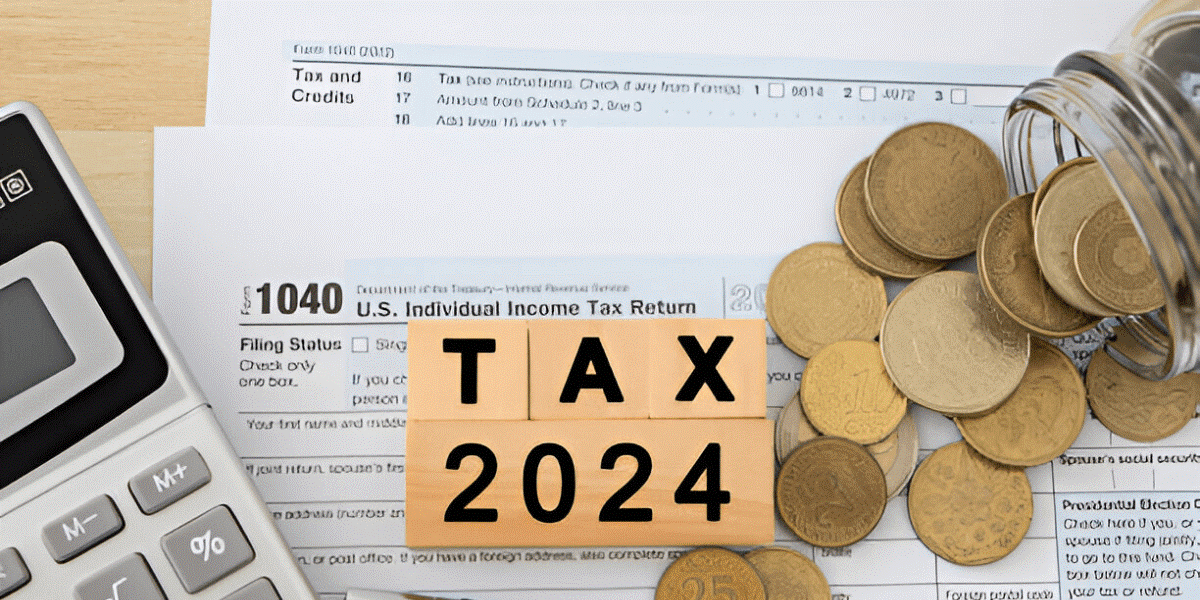Tax Incentives For Early-Stage Investors
Early-stage investments are crucial for the growth and innovation of the Australian market, providing essential funding that enables startups and innovative companies to develop their ideas and bring new products and services to market. Recognising the inherent risks and long-term nature of investing in these nascent companies, the Australian Government has implemented tax incentives aimed at encouraging investors to engage more actively in this sector.
These incentives are not just financial mechanisms; they represent a commitment to fostering an environment where innovation thrives and where investors can contribute to the economic dynamism with a measure of support and security. In this blog, we will delve into the benefits these incentives offer, outline the criteria necessary for investors and companies to qualify, and discuss the broader implications of these incentives on both the investment landscape and the Australian economy at large.
Join us as we go through the intricacies of tax incentives for early-stage investors, shedding light on how these policies are shaping the future of innovation in Australia.
Understanding Early-Stage Investments
Definition of Early-Stage Investments
Early-stage investments refer to the capital provided to startups and innovative companies at the initial stages of their lifecycle. These investments are typically characterised by higher risks compared to more established businesses, as they involve funding companies with unproven business models, developing technologies, or products yet to reach the market.
Despite these risks, early-stage investments are essential for driving innovation, creating jobs, and fostering economic growth.
The Role of Early Stage Innovation Companies (ESIC) in the Economy
Early Stage Innovation Companies (ESICs) play a vital role in the Australian economy by acting as the cornerstone for innovation and technological advancement. ESICs are typically small, nascent companies focused on developing disruptive technologies or services with the potential for high growth.
By providing a pathway for these companies to access capital, ESICs stimulate technological advancements, generate employment opportunities, and contribute to the diversification and competitiveness of the Australian economy.
Overview of the ESIC Regime Starting from 1 July 2016
The ESIC regime, introduced on 1 July 2016, marks a significant milestone in Australia's approach to fostering innovation and entrepreneurship. This regime provides tax incentives for investors who put capital into qualifying early-stage innovation companies. The incentives include a non-refundable tax offset for investors, equivalent to 20% of the amount invested in qualifying companies, capped at $200,000 per investor per year, and a modified Capital Gains Tax (CGT) treatment, which encourages longer-term investment by providing a CGT exemption for shares held for at least 12 months but less than ten years.
The introduction of the ESIC regime represents a strategic effort by the Australian Government to reduce the financial risks associated with early-stage investments and to make the Australian startup ecosystem more attractive to both domestic and international investors. Through these incentives, the government aims to ignite a culture of innovation and entrepreneurship, ensuring that Australia remains at the forefront of technological advancement and economic development.
Tax Incentives Overview
The Australian Government has introduced two key tax incentives for early-stage investors, underscoring its commitment to fostering an environment of innovation and supporting the growth of startups. These incentives are designed to mitigate some of the risks associated with investing in the early stages of a company's development and to make such investments more appealing.
Early Stage Investor Tax Offset
The first incentive is the early-stage investor tax offset, which provides investors with a 20% non-refundable tax offset on investments made into qualifying early-stage innovation companies (ESICs). This offset is capped at $200,000 per investor per year, promoting substantial financial engagement from investors while ensuring the support is targeted and sustainable. This immediate financial benefit is intended to lower the effective cost of investment, thereby encouraging a broader range of investors to consider funding innovative startups.
Modified Capital Gains Tax (CGT) Treatment
The second incentive is the modified Capital Gains Tax (CGT) treatment. Investors who hold their shares in an ESIC for at least one year but less than ten years can potentially disregard any capital gains from these shares, providing a significant incentive for long-term investment in innovation. This favourable CGT treatment aims to align investors' interests with the long-term success of the company, encouraging patience and sustained support that startups critically need.
Purpose of These Incentives
The overarching goal of these tax incentives is to stimulate investment in innovation and support the growth and development of startups. By making early-stage investments more attractive, these measures help ensure that promising Australian startups have the capital they need to scale, innovate, and compete on a global stage. This, in turn, drives technological advancement, job creation, and economic diversity.
Qualifying For Tax Incentives
To access the tax incentives provided for early-stage investments, both investors and companies must meet specific criteria laid out by the Australian Government. These criteria ensure that the incentives are directed towards genuine innovation and provide a structured framework for investment.
Purchasing New Shares in an ESIC
Investors must purchase new shares directly from a qualifying ESIC to be eligible for the tax incentives. This requirement ensures that the capital provided goes directly to supporting the company's growth and development. The shares must be issued on or after 1 July 2016, aligning with the commencement of the ESIC regime.
Limits And Calculations
For those navigating the world of early-stage investments, understanding the limits and calculations related to the available tax incentives is essential. These elements ensure that the benefits are accessible while maintaining fairness and sustainability within the investment landscape.
Investment Limits for Non-Sophisticated Investors
Recognising the need to protect retail investors from the high risks associated with early-stage investments, the Australian Government has instituted a $50,000 annual cap on investments that can qualify for tax incentives for non-sophisticated investors. This cap is designed to prevent investors from becoming over-exposed to the inherent risks while still allowing them to participate in and benefit from the growth of innovative companies.
The $50,000 Cap and Its Implications
Exceeding this $50,000 limit disqualifies investors from receiving the early-stage investor tax offset and the modified CGT treatment for any of their investments in that income year. This applies even if only part of the investment exceeds the cap, emphasising the importance of careful investment planning.
Calculating the Early Stage Investor Tax Offset
The early-stage investor tax offset is calculated at 20% of the amount invested in qualifying ESICs, up to a maximum offset of $200,000 per investor per year. This generous provision aims to significantly reduce the effective cost of investment, making early-stage investments more attractive.
• The 20% Rule: Directly ties the tax offset to the amount invested, providing immediate, tangible benefits to investors.
• Maximum Offsets and Carry-Forward Provisions: For investments exceeding the cap, the offset cannot be increased, but unused portions of the tax offset can be carried forward into future income years. This carry-forward provision ensures that investors can continue to benefit from their early-stage investments over time.
Compliance And Anti-Avoidance Measures
The integrity of tax incentives for early-stage investors is safeguarded by robust compliance and anti-avoidance measures, specifically outlined in Part IVA of the Income Tax Assessment Act 1936. These measures target schemes that are contrived or artificially arranged to access the tax incentives, ensuring that only genuine investments that meet the spirit and letter of the law benefit from these incentives.
Overview of Part IVA
Part IVA grants the Australian Taxation Office (ATO) the authority to review and, if necessary, cancel the tax benefits obtained through schemes designed to improperly exploit the tax incentives. This provision is a critical component of the legislative framework, deterring and penalising attempts to manipulate the system for unintended advantages.
The Role of the Australian Taxation Office (ATO)
The ATO plays a crucial role in ensuring compliance with the tax laws and maintaining the integrity of the tax incentive system. Through diligent oversight, the ATO ensures that the tax incentives achieve their intended purpose: to support genuine early-stage investments and foster innovation within the Australian economy. Investors and companies alike are encouraged to engage with the ATO and seek clarification on their eligibility and obligations under the tax incentive scheme, ensuring that their investments contribute positively to Australia's vibrant innovation ecosystem.
ESIC Decision Tool
Moving through the complexities of early-stage investments and understanding eligibility for tax incentives can be a daunting task. To assist investors and companies in this journey, the Australian Taxation Office (ATO) has developed the Early Stage Innovation Company (ESIC) Decision Tool. This online resource aims to simplify the process of determining whether an investor is eligible for tax offsets and if a company qualifies as an ESIC based on the information provided.
Purpose of the ESIC Decision Tool
The ESIC Decision Tool serves as a preliminary guide, offering users personalised outcomes by asking a series of questions related to the specific criteria of ESIC qualification. Its primary purpose is to facilitate a basic understanding of the requirements and to help users assess their potential eligibility for tax incentives.
Limitations and Importance of Comprehensive Evaluation
While the ESIC Decision Tool is a valuable resource, it comes with limitations. It cannot account for all nuances and individual circumstances that may affect eligibility. The tool is designed for companies with a normal balance date of 30 June and provides general guidance based on the responses given.
Investors and companies are advised not to rely solely on this tool for making critical decisions. Seeking professional advice or direct consultation with the ATO is recommended for a comprehensive evaluation of eligibility and compliance with the ESIC criteria.
Wrapping Up:
In conclusion, the Australian Government's tax incentives for early-stage investors represent a pivotal strategy in fostering innovation and supporting the growth of startups across the nation.
By offering the early-stage investor tax offset and modified Capital Gains Tax treatment, these incentives aim to reduce the financial risk associated with investing in emerging companies, thereby encouraging wider participation in the innovation ecosystem.
While navigating the eligibility criteria and ensuring compliance with anti-avoidance measures require diligence, tools like the ESIC Decision Tool and the guidance of a professional
tax agent in Sydney can provide valuable assistance.
Through practical examples, we've seen how these incentives not only benefit investors but also empower companies to reach their full potential. As we continue to embrace these measures, the future of Australian innovation looks promising, with a thriving startup landscape contributing significantly to our economic resilience and technological advancement.




















